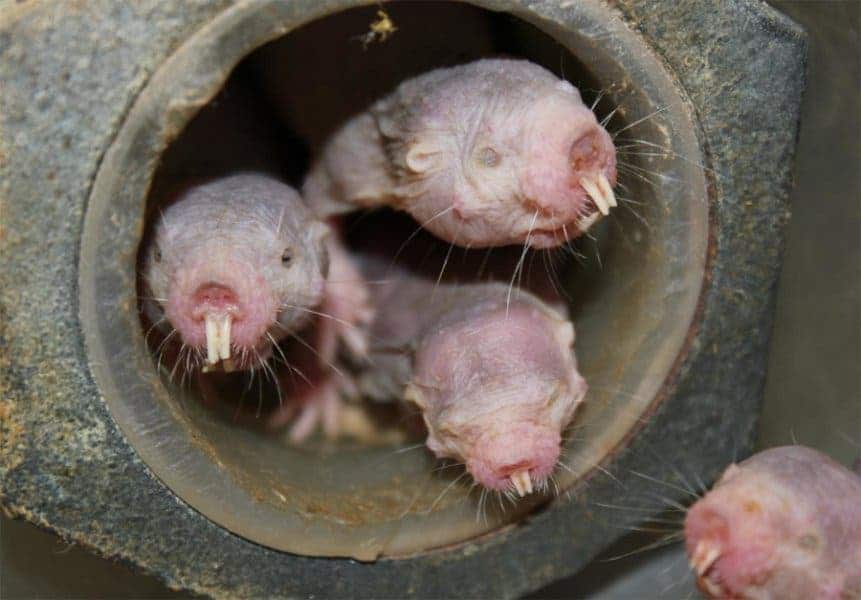No oxygen? No problem — when faced with a lack of oxygen, African naked mole-rats take a cue from plants and start metabolizing fructose to survive, a new paper reports.
You know what would really ruin your day? A lack of oxygen.
But that’s only because we’re humans and not the awesome Heterocephalus glaber or African naked mole-rat. Individuals of this species are used to living jam-packed with hundreds of their kin in small, poorly-ventilated burrows — where the oxygen-o-meter often falls below breathable levels. So the hairless critters have evolved to counteract this by copying a part of the plant metabolism. Understanding how their bodies do this could open the way to treatments for patients suffering crises of oxygen deprivation, as in heart attacks and strokes.
“This is just the latest remarkable discovery about the naked mole-rat — a cold-blooded mammal that lives decades longer than other rodents, rarely gets cancer, and doesn’t feel many types of pain,” says Thomas Park, professor of biological sciences at the University of Illinois at Chicagoand lead author of the study.
The team exposed naked mole-rats to low oxygen conditions in lab settings, and subsequently found high concentrations of fructose in their bloodstream. This compound was shuttled to neurons via molecular fructose pumps which are only used in the intestine walls of all other mammal species. Park’s team reports that when oxygen levels fall, the naked mole-rats’ brain cells begin metabolizing fructose, a process which releases energy without needing any oxygen. Up to now, this metabolic pathway was only documented in plants — so finding it in the moles was a big surprise.
Fructose metabolism allows the moles to live more than five hours through oxygen levels low enough to kill a human in minutes. Since only their brains are kept at full power by the compound, the moles enter a state of suspended animation in which they exhibit drastically reduced movement and a much lower pulse and breathing rate to save up on energy. It’s the only mammal known to use a suspended-animation state to power through oxygen deprivation.
They’re also seemingly immune to pulmonary edemas — the buildup of fluid which clogs the lungs of mammals in low-oxygen environments, such as climbers at high altitude.
“The naked mole-rat has simply rearranged some basic building-blocks of metabolism to make it super-tolerant to low oxygen conditions,” park adds.
The full paper “Fructose-driven glycolysis supports anoxia resistance in the naked mole-rat” has been published in the journal Science.










